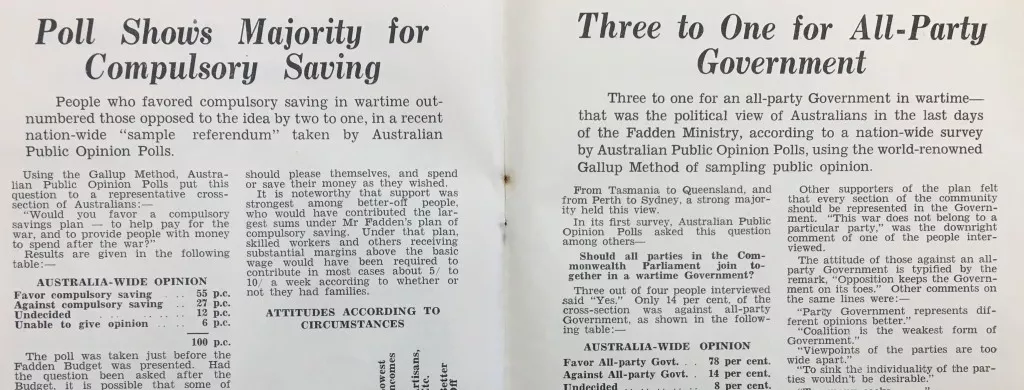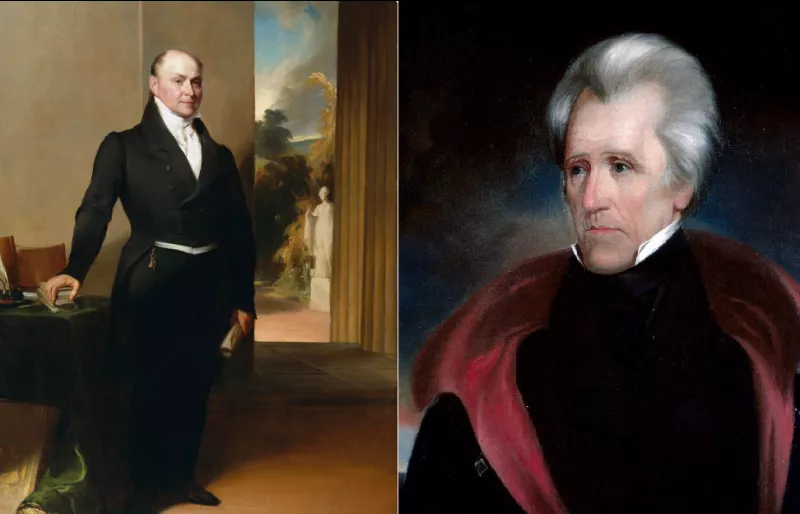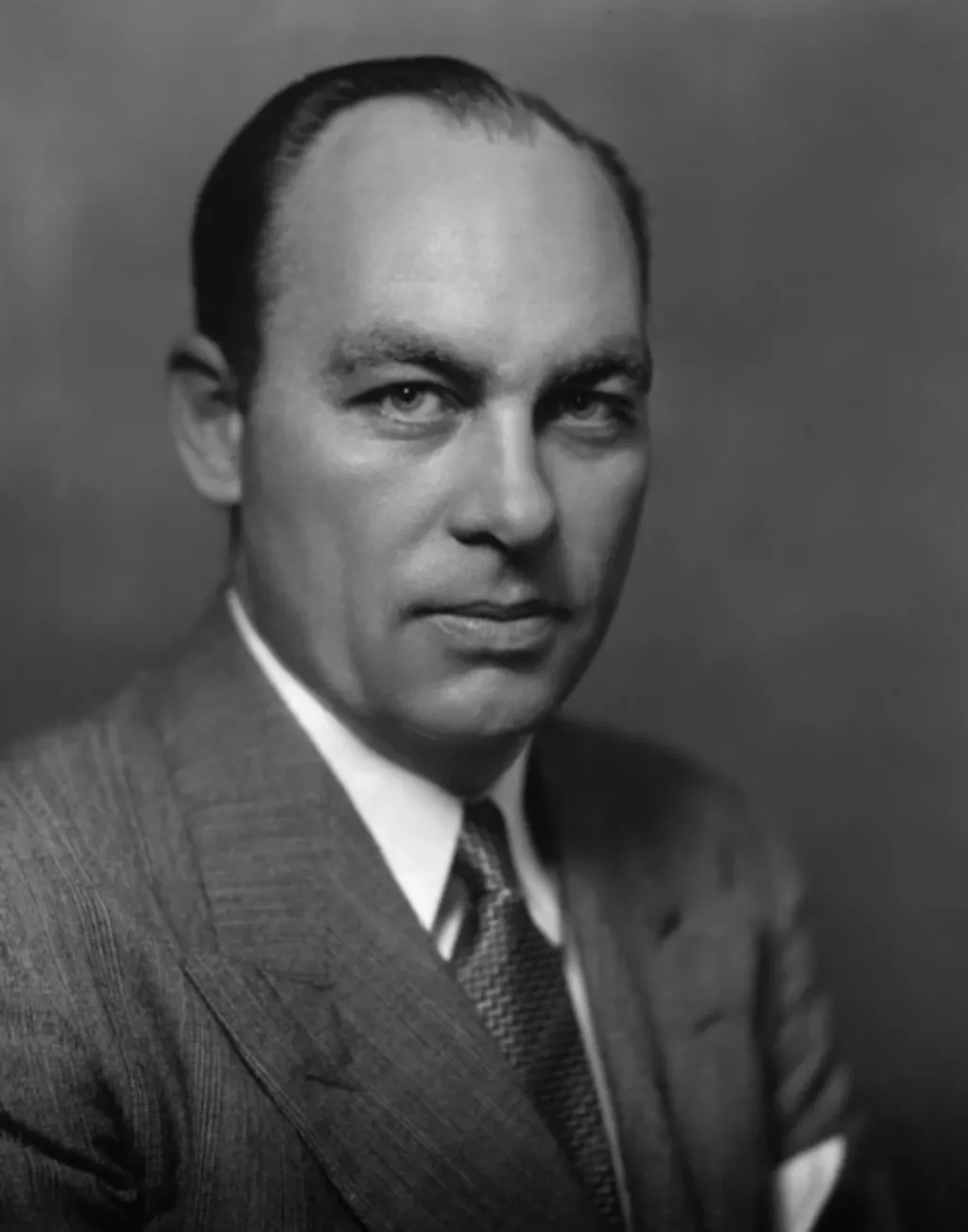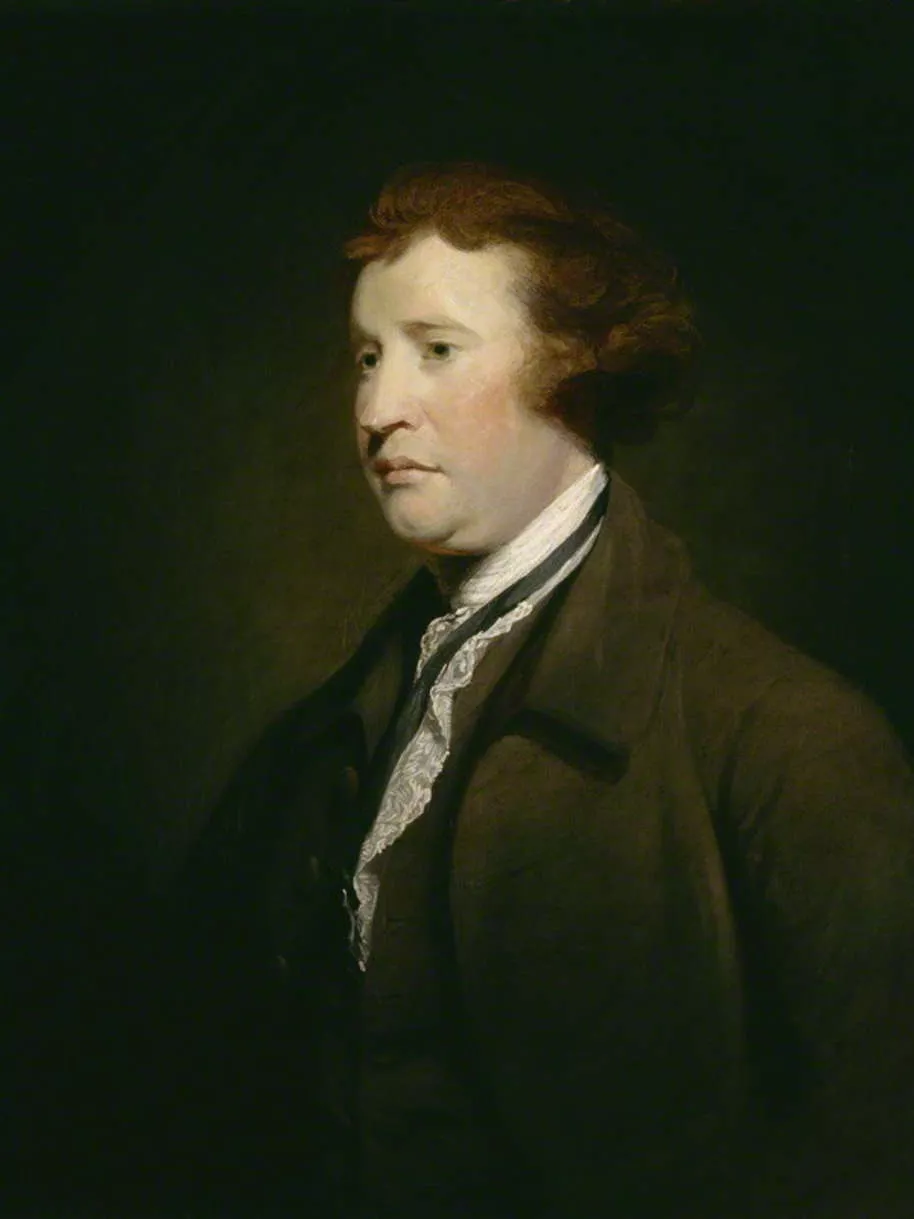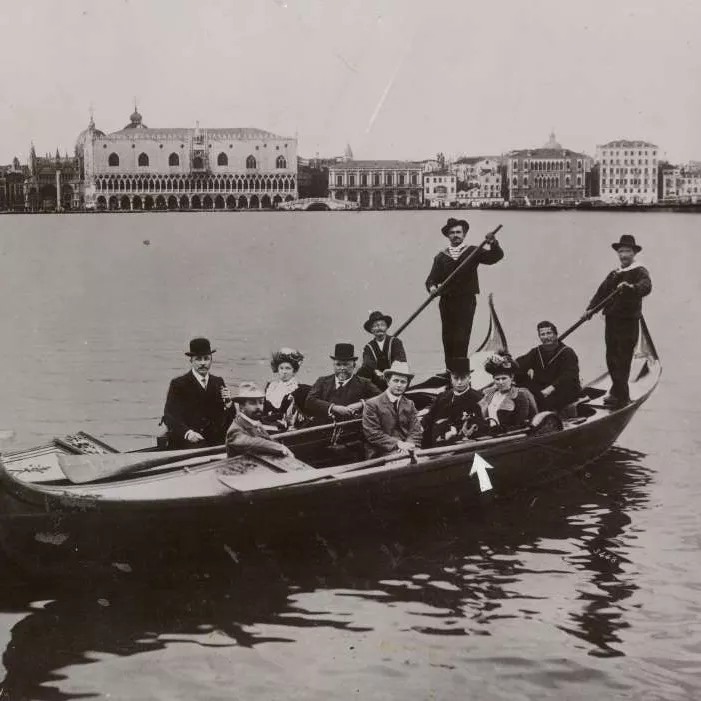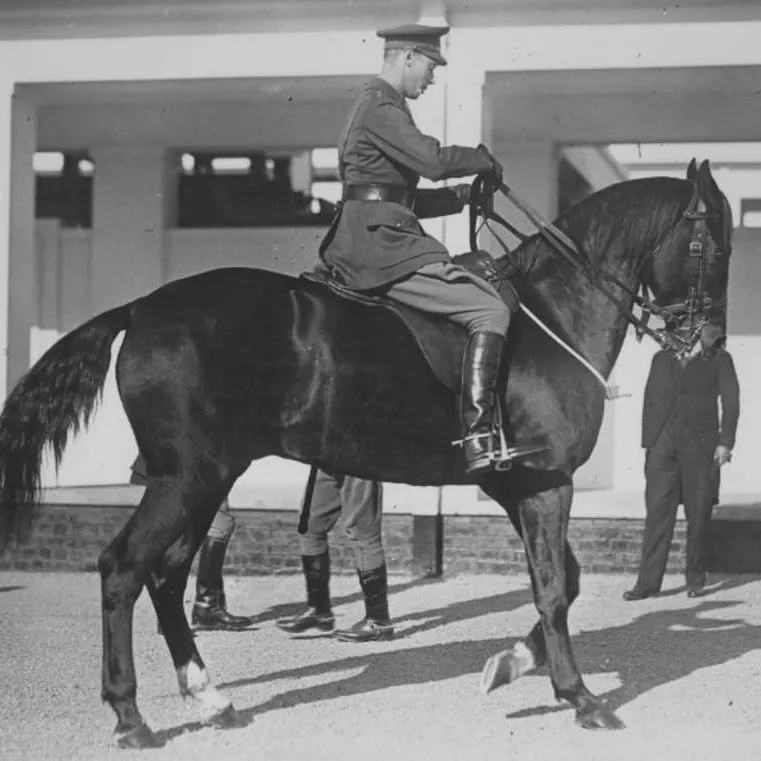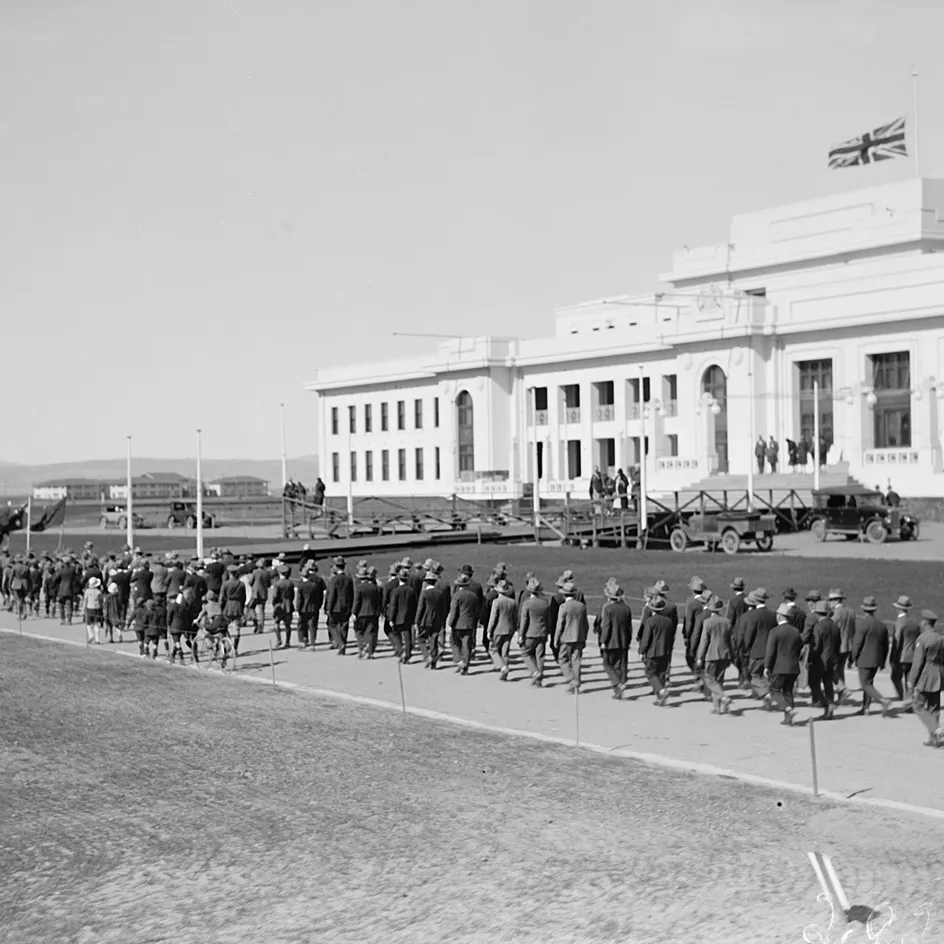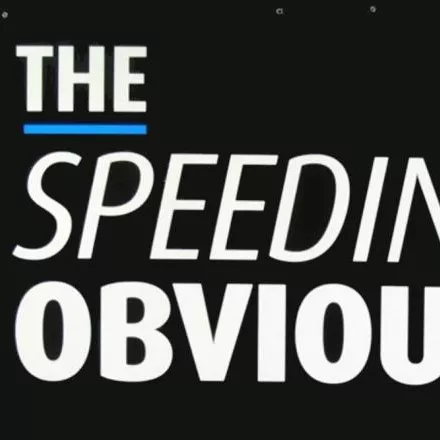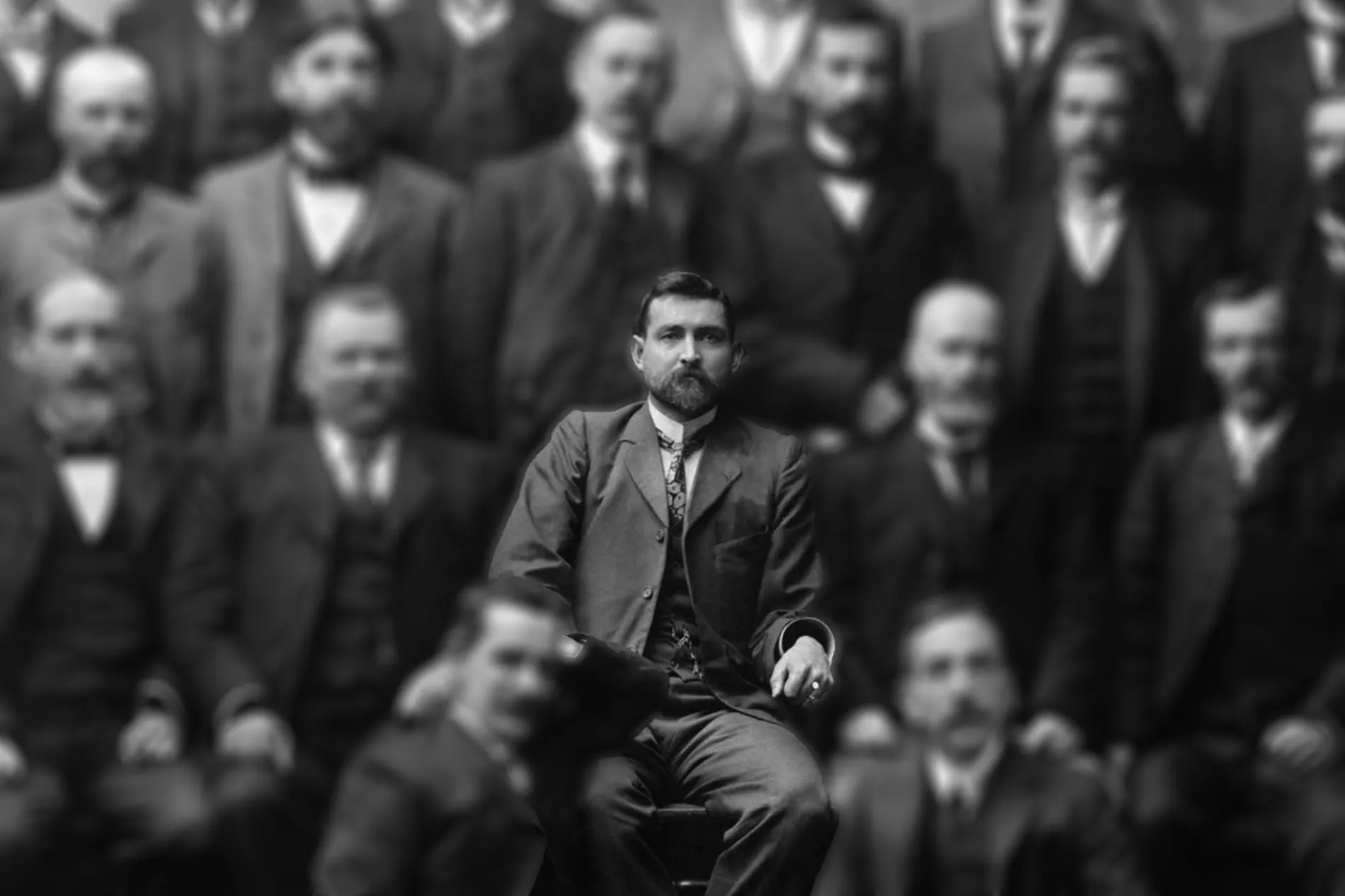A Galluping success
Most modern polls derive from the Gallup method, invented by American George Gallup. This method involves sampling a randomly selected, statistically average group of people. Gallup’s first poll, in 1932, correctly predicted a local election in Iowa. Four years later, Gallup went against a more respected straw poll conducted by The Literary Digest, which saw more than two million people return surveys. Based on that data, The Literary Digest predicted Roosevelt’s opponent, Alf Landon, would win. The Literary Digest was wrong, and Gallup was right; Roosevelt won in a landslide.
But Gallup didn’t always get it right - in 1948 he, like almost everyone else, predicted Harry S. Truman would lose to Thomas Dewey, but Truman won. Gallup’s organisation, Gallup Inc. still exists and regularly runs opinion polls in the USA and around the world.
In a 1941 pamphlet, a Gallup-affiliated company, Australian Public Opinion Polls, conducted a thorough Gallup poll of Australians on a variety of issues. While there may have been some other kinds of polling before, this survey was the biggest of its kind conducted in Australia at the time. The company aimed to conduct regular polls to gauge public opinion, and they wanted to demonstrate that the Gallup method worked. In their introduction, they warned:
'It is not suggested that the leaders of Australia should blindly follow poll findings … but the polls will add to the evidence on which those with the responsibility of leadership base their estimates of public reaction.'


